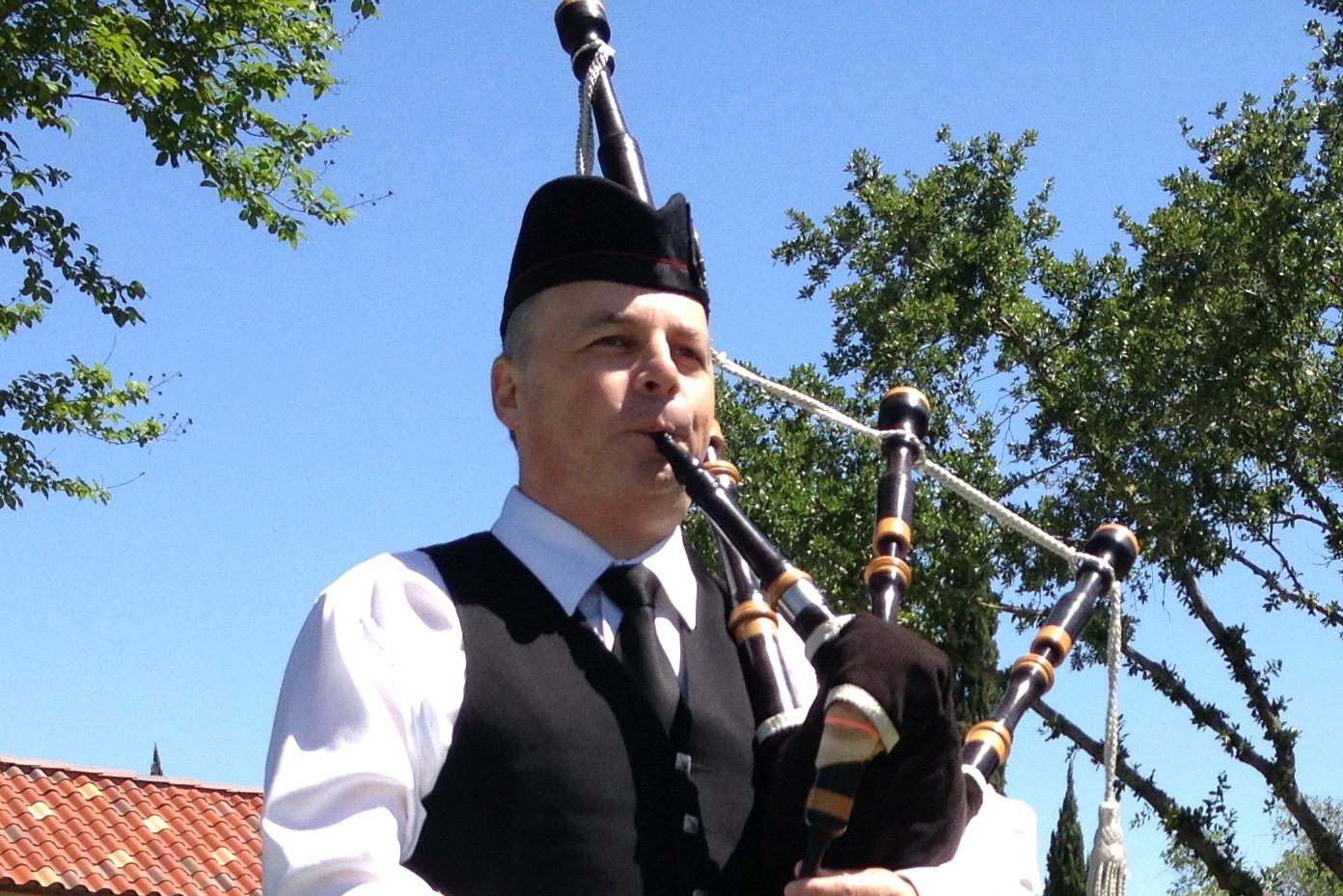Bagpipers in Funeral Services
A brief guide on how to incorporate a bagpiper in your remembrances
In my time in Houston and Texas as a bagpiper I am often asked for advice on when and how the pipes can be used in a funeral service or remembrance. The following is a brief guide but by no means the limit of how and when you can use the pipes.
In maximizing the services of a bagpiper at a funeral service, memorial, wake, or celebration of life a few main factors should be considered
- Where should the piper play;
- When should the piper play; and
- What should the piper play
As a brief synopsis, the following are quick suggestions for incorporating bagpipes into a service or other remembrance.
A more detailed description of each of the major factors follows.
- Outside as mourners arrive;
- Meet the hearse and pipe the pall-bearers and casket into the hall or church;
- Play one or more selections at some point during the service;
- Pipe the pall-bearers and casket out of the church or hall and back to the hearse;
- Play outside the church or hall as the mourners leave;
- Play near the grave site or outside the mausoleum or chapel as the mourners arrive.
- Meet the hearse and pipe the poll-bearers and casket to the grave site or scattering site;
- Play one or more selections at some point during the graveside, cremation, or scattering service;
- If flowers are provided to the mourners, the piper often plays while the flowers are being placed;
- Play during the lowering of the casket, placing of the urn, or the closing of the curtain for a cremation service.
- Play at the end of the service as the mourners leave.
Where Should the Piper Play?
Families typically have a bagpiper play at one or more of the following locales.
- At the church or memorial hall;
- During the funeral service;
- At the graveside for internment;
- At a crematorium; and/or
- Any other location for a wake, remembrance, or scattering ceremony.
When Should the Piper Play?
There is great flexibility depending on the desires of the family. The following provides some suggestions based on the location.
At a Church or Memorial Hall
Before the Service – A bagpiper can be used very effectively as mourners arrive to create an air of solemnity and reflection, particularly if mourners are expected to arrive within a fairly short period of time (for instance, 15-20 minutes before a service begins). Additionally, the piper can meet a hearse, if appropriate and start the processional of the service and lead the pall-bearers and casket either to the front door of the service or in through the congregants.
During the Service – Bagpipe music can be used throughout the service as the family desires. Bagpipes can also be played ensemble with a pipe-organ or as a prelude to a choral.
At the end of the Service – If a casket is present, the piper can again lead the pall-bearers and casket back down the aisle and out the door of the church to the waiting hearse, and continue playing as the casket is being loaded. If there is no casket, or if the family desires this instead, the piper can play near the door as the mourners leave. Additionally, a piper can stand nearby the entrance of a reception if it follows the service.
Playing At the Cemetery
Before the Service Begins – The amount of time that the piper plays before a service usually depends on whether the service takes place at a chapel or mausoleum, or just at the grave site. The piper will generally play for a longer period (usually for 15-20 minutes) before the start of a service at a cemetery chapel or mausoleum. At a grave site service (which often follows a church or chapel service), the playing time before the service begins is much shorter (usually about 5-6 minutes) because the mourners generally arrive together.
At the Grave site – The piper will meet the hearse and start playing a processional air as the pall-bearers take the casket from the hearse. The piper can then lead the procession to the grave site.
During the Service – One or more selections, such as “Amazing Grace”, may be played at an appropriate time during the service, usually while flowers are being placed on the casket and/or it is being lowered.
After the Service – When the service concludes, the piper will again play as the mourners leave the chapel, mausoleum, grave site, or scattering site.
What should the Piper Play?
Amazing Grace is perhaps the best known, and most popular, composition performed on the bagpipe. However, there is a vast repertoire of appropriate music for funeral services. Slow Airs and Laments are particularly suited for funeral and memorial services, as well as Piobreachd, considered the classical music of bagpipes.
Here is a list of tunes commonly played at funerals. Samples can be found by an internet search of each title:
- Flowers of the Forest
- Highland Cathedral
- The Mull of Kintyre
- The Dark Island
- The Skye Boat Song
- Mist Covered Mountains
- Going Home
- Amazing Grace
- Taps
Many other special requests for music can usually be accommodated. However, it must be noted that the Bagpipe is not a fully chromatic instrument. A highly qualified professional musician should inform a family if their musical request may sound different than they might expect due to this. However, all requests should and can be accommodated whenever possible. The individual needs of a family should always be of utmost concern.
